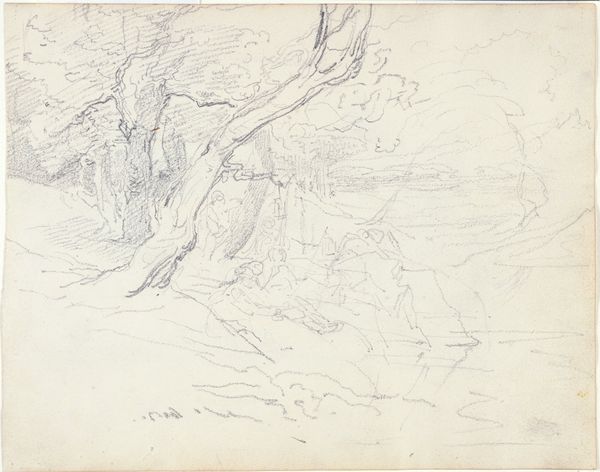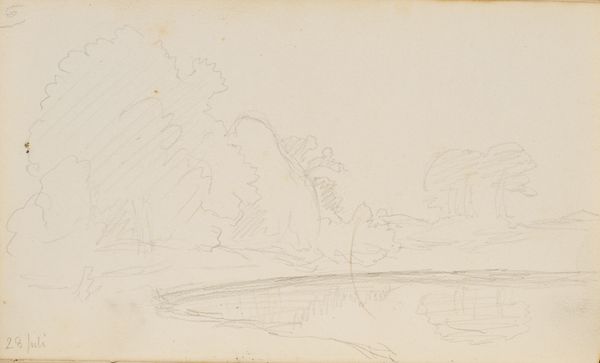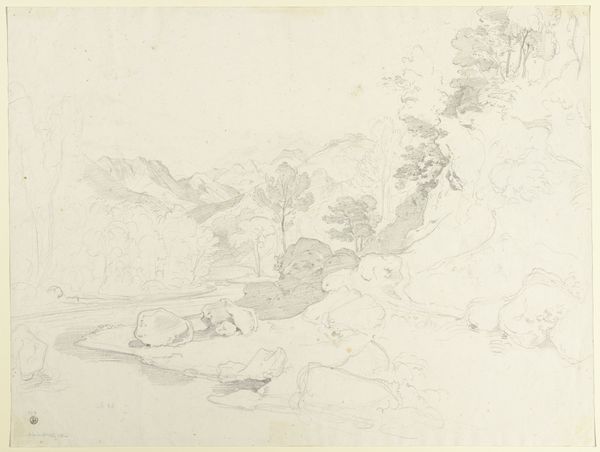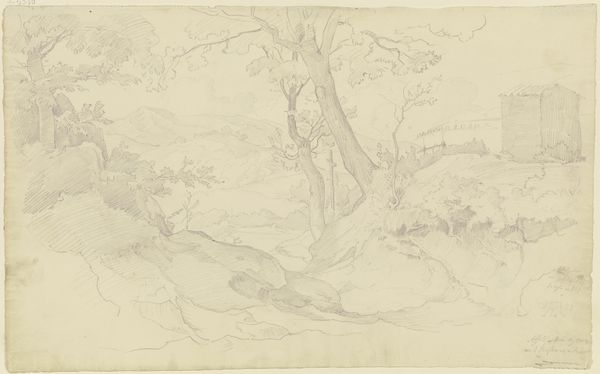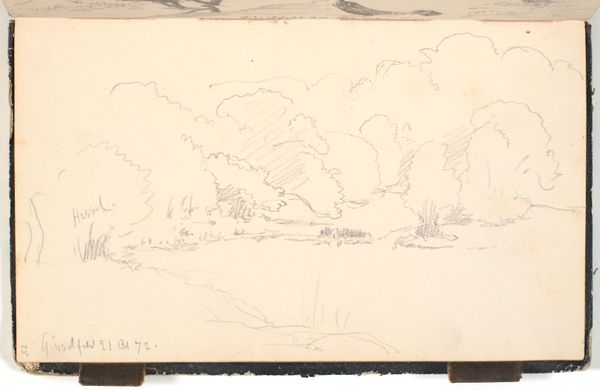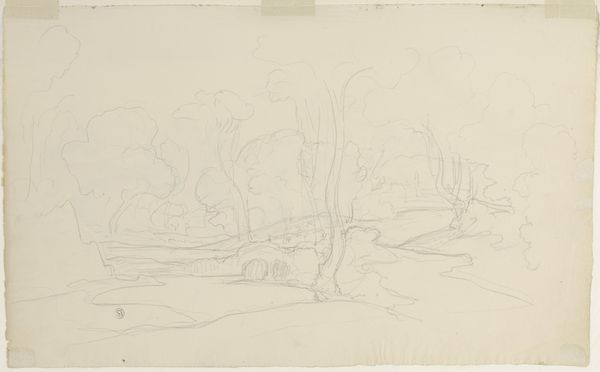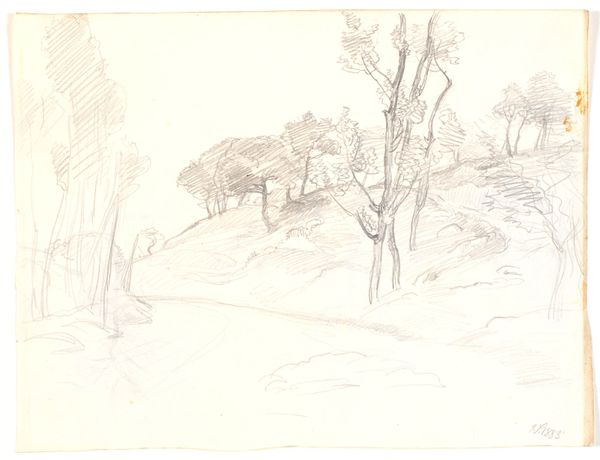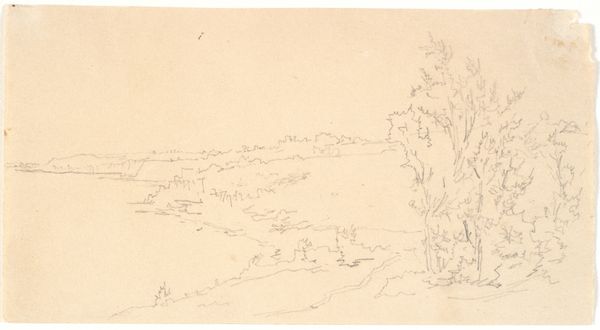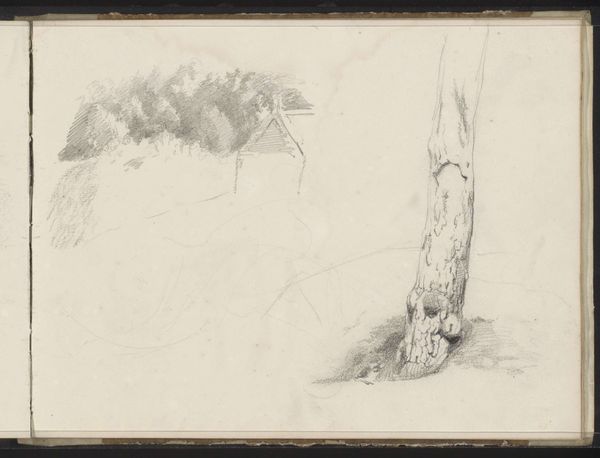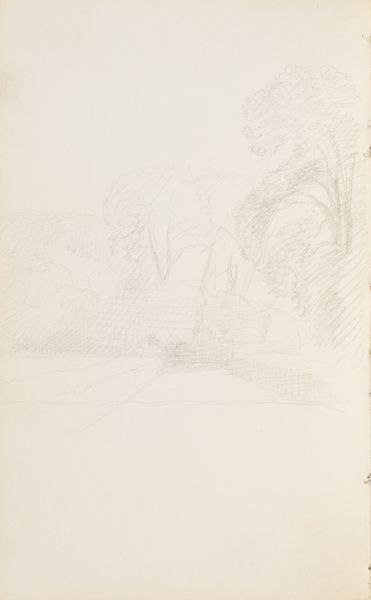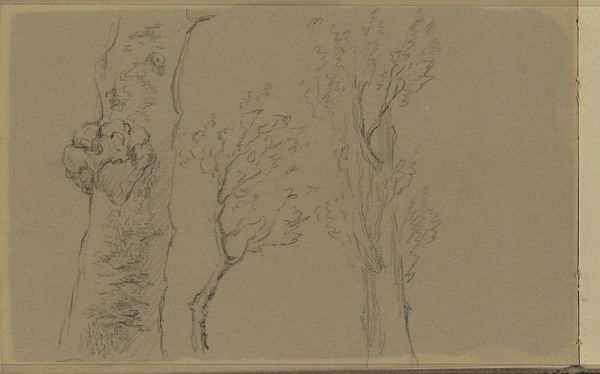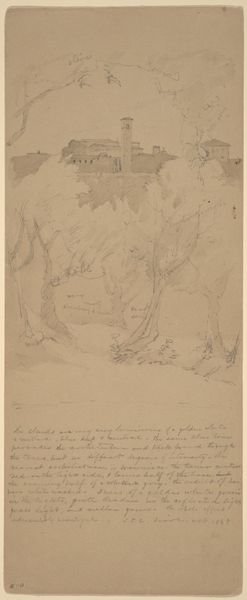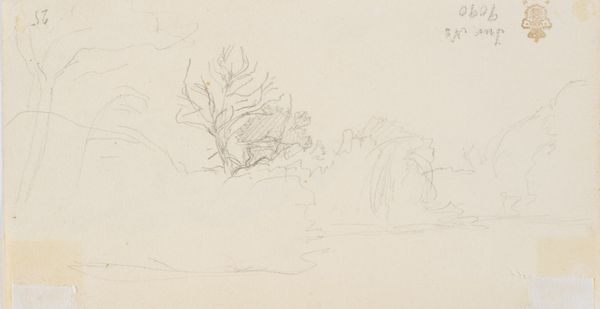
En vej ved en skrænt. To personer går på vejen. Ved siden af vejen nogle små træer. I baggrunden bjerge 1869
0:00
0:00
drawing, pencil
#
drawing
#
pencil sketch
#
landscape
#
pencil drawing
#
pencil
Dimensions: 204 mm (height) x 115 mm (width) (bladmaal)
Editor: This sketch feels like a whisper of a place, a memory almost faded but still holding some potent emotion. Like longing. Curator: That's a beautiful way to describe it. What you're responding to is a pencil drawing, dating back to 1869, by P.C. Skovgaard. The museum titles it "En vej ved en skr\u00e6nt. To personer g\u00e5r p\u00e5 vejen. Ved siden af vejen nogle sm\u00e5 tr\u00e6er. I baggrunden bjerge"—"A Road on a Slope. Two people walk on the road. Next to the road some small trees. In the background, mountains". Skovgaard was dedicated to depicting the Danish landscape, and in doing so, participated in the construction of Danish national identity during a time of political and social change. Editor: Oh, nationalism, so complex. I mean, on one hand, there's a beauty to claiming space and belonging, but on the other, who gets to define that "Danishness"? Still, even without knowing that context, I feel that landscape deeply. It's spare, yes, but there is something profoundly human about it with the inclusion of figures walking on the path, tiny compared to their surroundings. Curator: That contrast is definitely there, speaking to a classic romantic motif, the sublime—human insignificance within nature’s grander scale. And thinking about those figures in light of that historical context I mentioned, they could represent an emerging sense of collective belonging. This "national character" becomes accessible for everyone. Not only to privileged classes of society. Editor: Do you think Skovgaard saw himself as creating propaganda? Or was he simply driven by an intuitive connection to the land? Curator: It is hard to determine whether he consciously fashioned national identity. Still, Skovgaard actively tapped into and expressed emerging feelings in a critical period of nation-building in Denmark. His work contributed to broader conversations about what it meant to be Danish. Editor: Hmmm. The lines feel so tentative, as if the scene is just forming, trying to fix itself into existence... Which, in a weird way, relates to that whole nation-building thing, right? A country trying to solidify its identity. Curator: Absolutely, that feeling of emergence ties into the artwork's context—it mirrors the period's ongoing formation of collective consciousness and political aspirations. It is amazing how a simple pencil sketch contains and conveys so much, inviting viewers like us to reflect upon art, history and our current moment. Editor: It’s kind of like looking at the bones of a landscape. Beautiful and haunted, a reminder that even sketches have stories to tell.
Comments
No comments
Be the first to comment and join the conversation on the ultimate creative platform.
